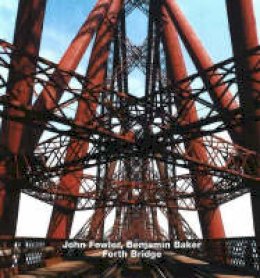26%OFF

Stock image for illustration purposes only - book cover, edition or condition may vary.
John Fowler, Benjamin Baker
Iain Boyd Whyte
€ 37.99
€ 28.16
FREE Delivery in Ireland
Description for John Fowler, Benjamin Baker
Hardcover. Talks about the Forth Bridge - the longest railway bridge in the world and the first large structure made of steel. Crossing the wide Firth of Forth west of Edinburgh in Scotland, it represents one of the greatest engineering triumphs of Victorian Britain, man's victory over the intractable topography of land and water. Series: OPUS. Num Pages: 60 pages, colour & b/w photos. BIC Classification: 1DBKSC; AJC; TN; WTM. Category: (G) General (US: Trade). Dimension: 284 x 308 x 12. Weight in Grams: 842.
When the Forth Bridge opened on 4 March 1890, it was the longest railway bridge in the world and the first large structure made of steel. Crossing the wide Firth of Forth west of Edinburgh in Scotland, it represents one of the greatest engineering triumphs of Victorian Britain, man's victory over the intractable topography of land and water. Not surprisingly, such a vigorous rebuff of the natural order was condemned at the time by those late Victorians who resisted the march of technology, and William Morris described the Bridge as the supremest specimen of all ugliness . In response, Benjamin Baker insisted that its beauty lay in its functional elegance. Contrasting the bridge with the only comparable structure of the period, the Eiffel Tower, he concluded: The Eiffel Tower is a foolish piece of work, ugly, ill-proportioned and of no real use to anyone. But the beauty and fascination of the Forth Bridge lies not simply in its functional performance, but in its scale and power. Over a mile long and higher than the dome of St. Peter's in Rome, it rivals the natural phenomena that the philosophers of the 18th century identified as sources of sublime beauty. Immanuel Kant pointed to hurricanes, boundless oceans and high waterfalls as objects of sublime contemplation, because they raise the forces of the soul above the heights of the vulgar commonplace, and discover within us a power of resistance of quite another kind, which gives us courage to be able to measure ourselves against the seeming omnipotence of nature . In the 19th century the awe-inspiring feats of nature were rivalled by the inventions of the engineers, and the thrill of the waterfall or the lightning flash was eclipsed by the sight of the roaring locomotive dashing across the majestic span of the Forth Bridge.
Product Details
Publisher
Edition Axel Menges Germany
Number of pages
60
Format
Hardback
Publication date
1997
Series
OPUS
Condition
New
Number of Pages
60
Place of Publication
Fellbach, Germany
ISBN
9783930698189
SKU
V9783930698189
Shipping Time
Usually ships in 5 to 9 working days
Ref
99-17
About Iain Boyd Whyte
Iain Boyd Whyte is an architectural historian specializing in the architecture of the late 19th and early 20th centuries. Angus J. Macdonald is a structural engineer with particular research interests in the relationship between structure and architecture. Both teach in the Department of Architecture at the University of Edinburgh. Colin Baxter, renowned for his sensitive images of the Scottish landscape, is one of Scotland's most celebrated photographers.
Reviews for John Fowler, Benjamin Baker
